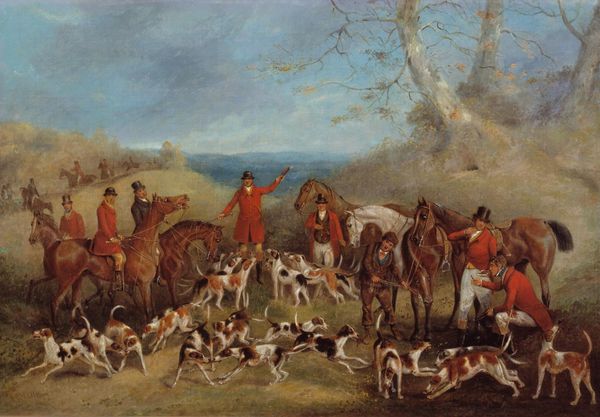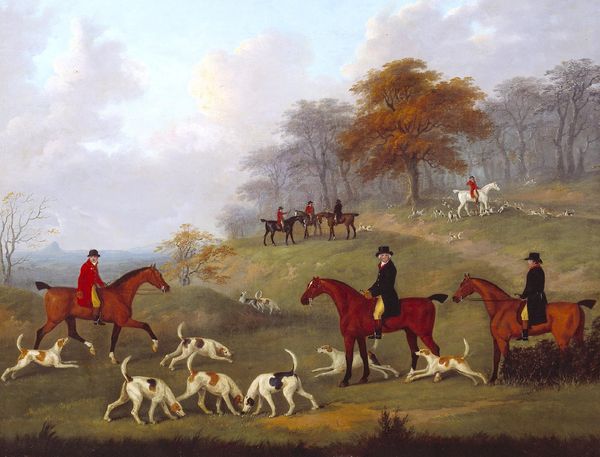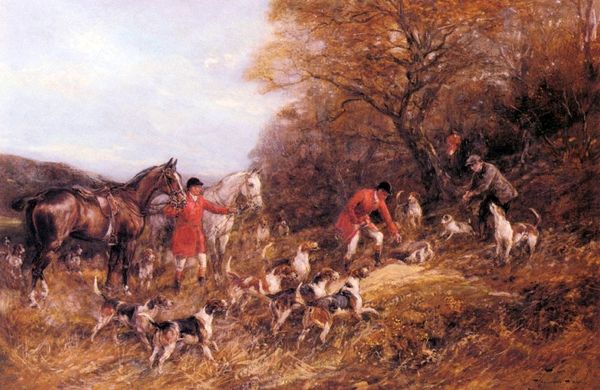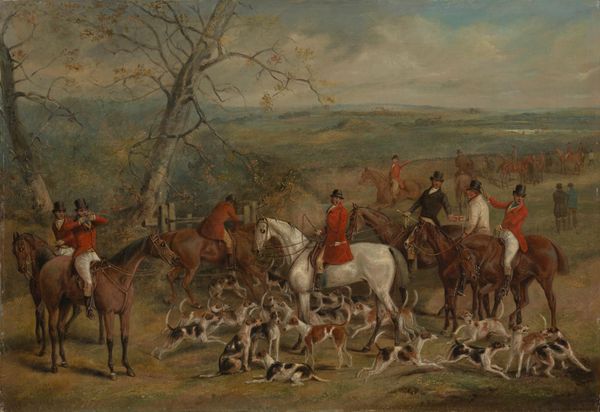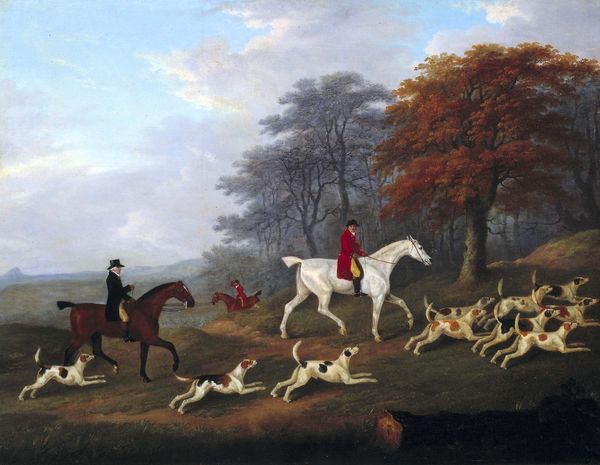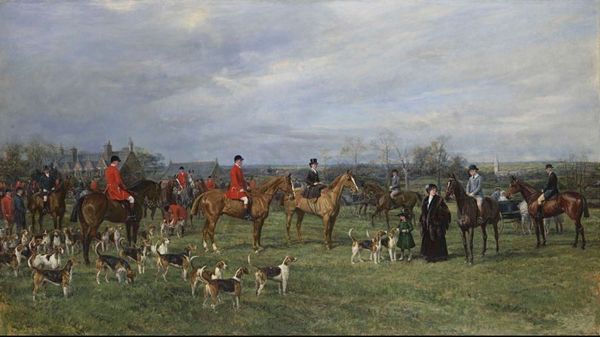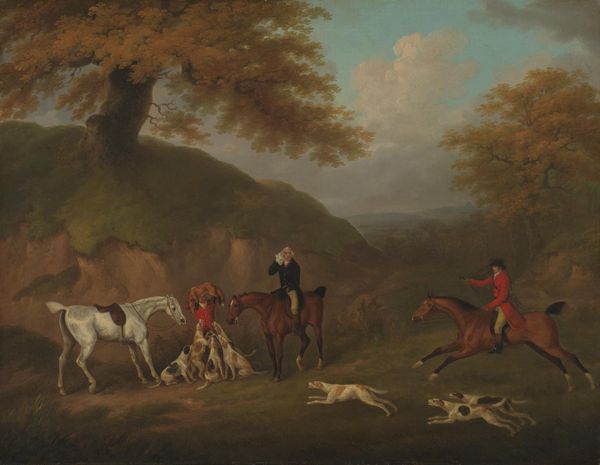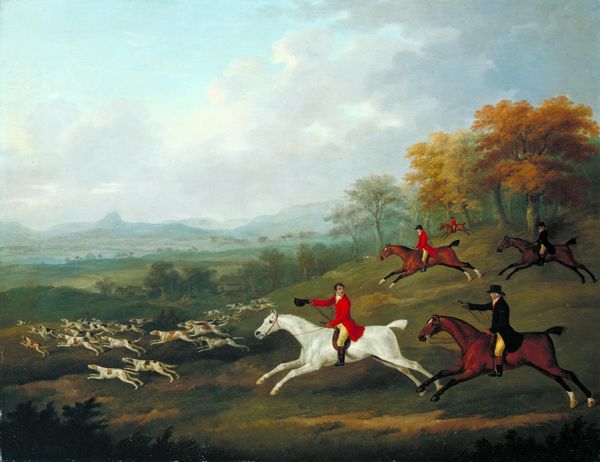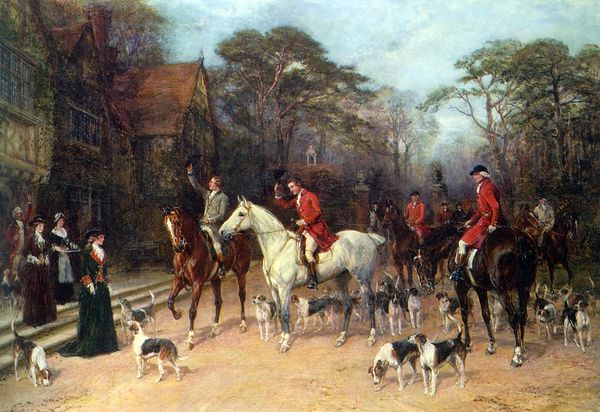
painting, oil-paint, impasto
#
painting
#
oil-paint
#
dog
#
landscape
#
figuration
#
oil painting
#
impasto
#
group-portraits
#
romanticism
#
animal portrait
#
water
#
genre-painting
Copyright: Public domain
Curator: Oh, that’s quite the dynamic scene. It has a very specific mood, charged with anticipation, I’d say. Editor: Indeed! Let's take a closer look at “Hunters and Hounds,” an oil painting possibly by Heywood Hardy. Note the energy captured, with the hounds in the foreground seemingly ready to spring forward. The scene depicts a fox hunt, complete with riders in red coats and the pack of hounds eagerly awaiting direction. Curator: You can almost hear the hounds barking! I am also captivated by the texture created by the impasto technique, particularly in the rendering of the dogs' fur and the undergrowth. It provides the work with such tangibility. Considering this materiality, how did access to quality paints and supports play a role in establishing scenes of leisure and elite social rituals? Editor: That’s an important question. These paintings became emblems of status, illustrating both access to leisure and power dynamics. Images such as this celebrated rural England, playing directly into conservative self-images of an idealized society. The museum plays an active role in its ongoing legacy, creating dialogue and preserving an artifact connected with British heritage. Curator: How much was the composition designed for, or influenced by, exhibition practices of the time? The group portraiture aspects suggest potential patrons or social networks were deliberately presented. And beyond social capital, how were these images financially accessible to differing classes in Victorian society? Editor: Prints of paintings like these circulated widely. While owning the original oil might be beyond the reach of most, engravings made them part of a shared visual culture. But in some ways, this image served more as a piece of propaganda for maintaining a very specific social structure, in which roles were quite clearly assigned. It seems to me a celebration of the aristocratic social norms of Victorian society. Curator: Right! It underscores how visual art became entangled with social engineering. Thinking about those artistic materials once again...it emphasizes the labour invested to perpetuate that lifestyle. Editor: From a historical standpoint, reflecting on this piece also encourages thinking about societal transformations and the evolving role of art in representing and shaping those changes. Curator: Yes, precisely! Thank you for elucidating some of the cultural underpinnings here. Editor: And thank you for illuminating the material considerations. It is a compelling scene!
Comments
No comments
Be the first to comment and join the conversation on the ultimate creative platform.
